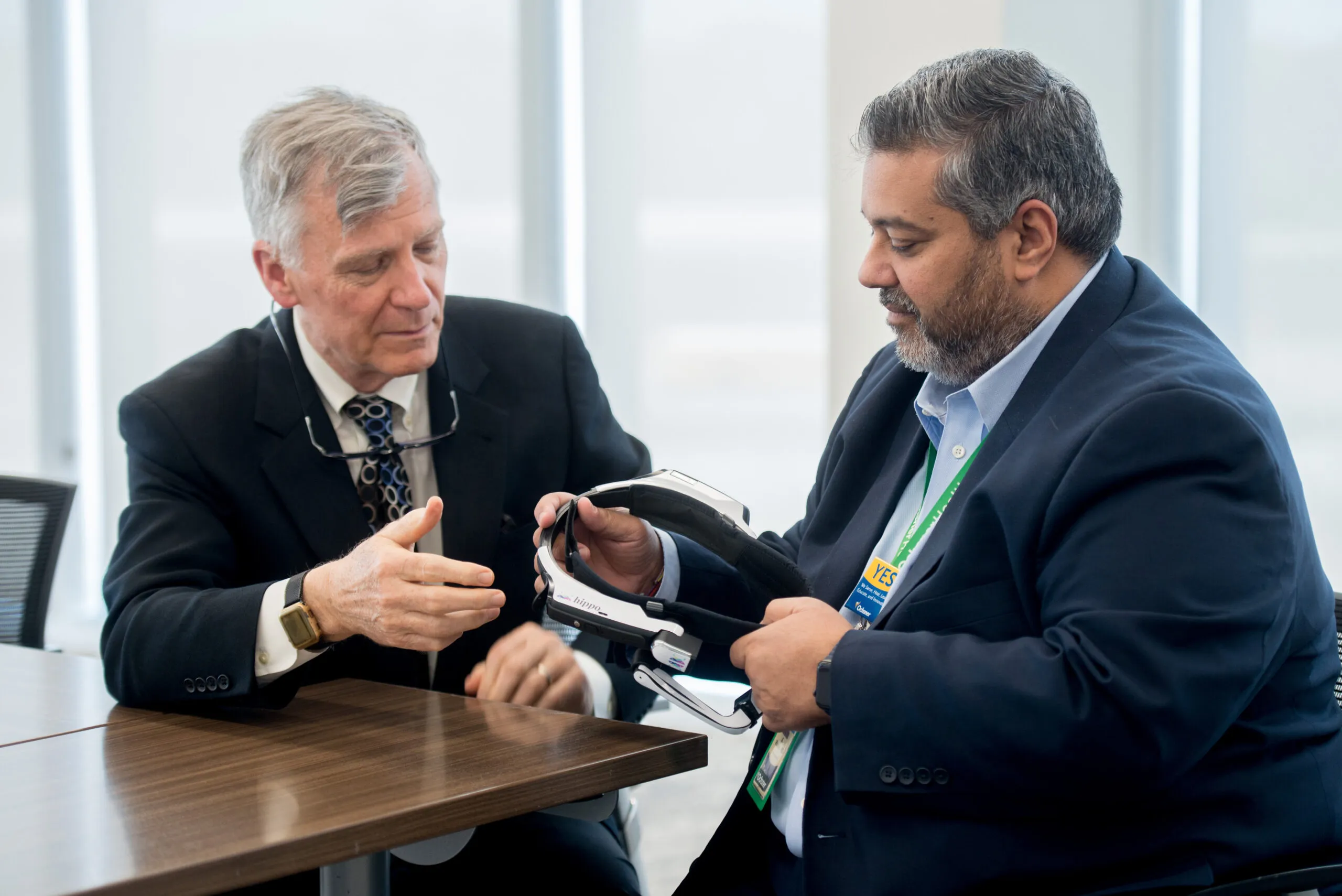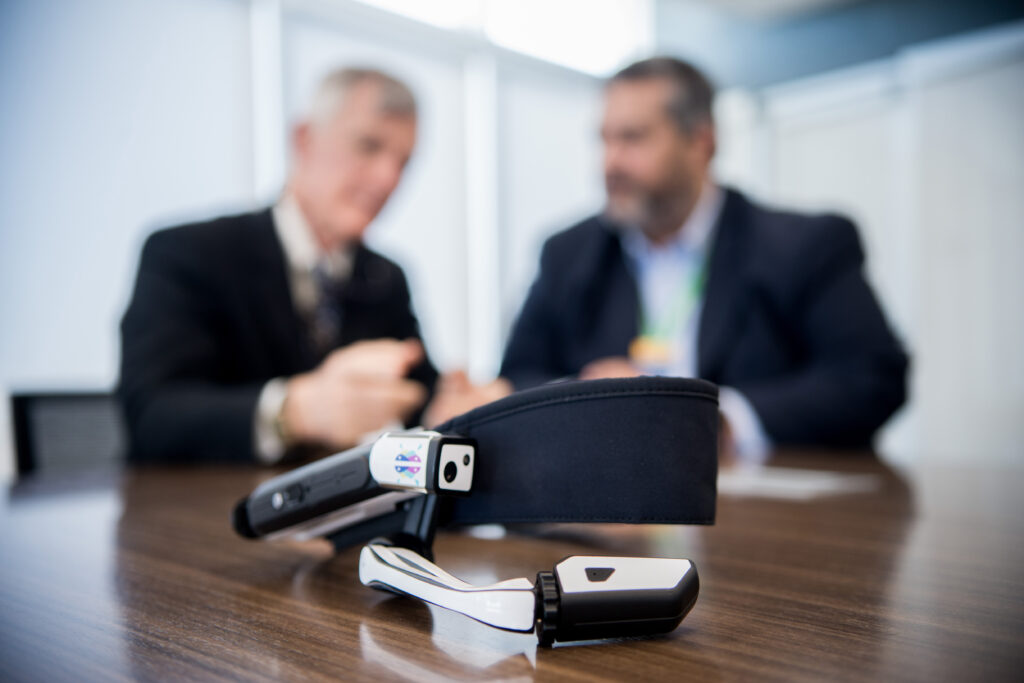Throughout the coronavirus pandemic, Telehealth bridged the gap between patients and health care providers, providing opportunities for video consultations in a seamless and efficient manner. But while Telehealth has achieved much, it only goes so far. In many cases, a doctor still needs to examine a patient to determine the best treatment path forward.
Now, a new technology being piloted at Ochsner Baton Rouge could redefine the way health care institutions provide virtual care. Ochsner Health’s neurology practice is deploying Hippo Virtual Care, a hands-free, voice-activated headset that allows an onsite clinician to examine a patient while communicating in real time with a remote physician.
“It’s revolutionary in terms of allowing us to extend our physicians’ capabilities,” says Regional Medical Director Aldo Russo, MD. “The technology has a wide range of uses, all of them increasing the level of care we can provide to our patients.”
In one scenario, the Hippo technology allows a clinician such as a nurse, nurse practitioner or physician’s assistant to examine a patient while wearing a sophisticated head camera that sends live information to the patient’s off-site physician. The hands-free, voice-activated device allows the onsite clinician to physically examine the patient, providing valuable data and video in real time.
In another scenario, a physician can use the headset to examine a patient, and send information about the case to consulting physicians who can then share their expertise. Still further, the Hippo technology can be used in graduate medical education, with residents and physicians using both ends of the platform.
“It’s durable, easy-to-use, voice-activated and hands- free,” says Hippo Technologies CEO and Founder Patrick Quinlan, MD, who retired in 2017 as CEO Emeritus of the Ochsner Health System. “It’s the kind of technology that will help health care institutions extend their workforce, improve operation-al efficiency and reach underserved communities.”
The platform not only allows the physician to visually participate in the exam, it also allows the user to pull up medical records and automatically access files and imaging during patient examinations, procedures and follow-ups. It allows physicians to provide a high level of care to a greater number of patients.
“It’s about delivering safe, expert care to our patients in a time when the world is demanding increased productivity,” Russo says. “We are looking forward to seeing where this technology takes us.”


